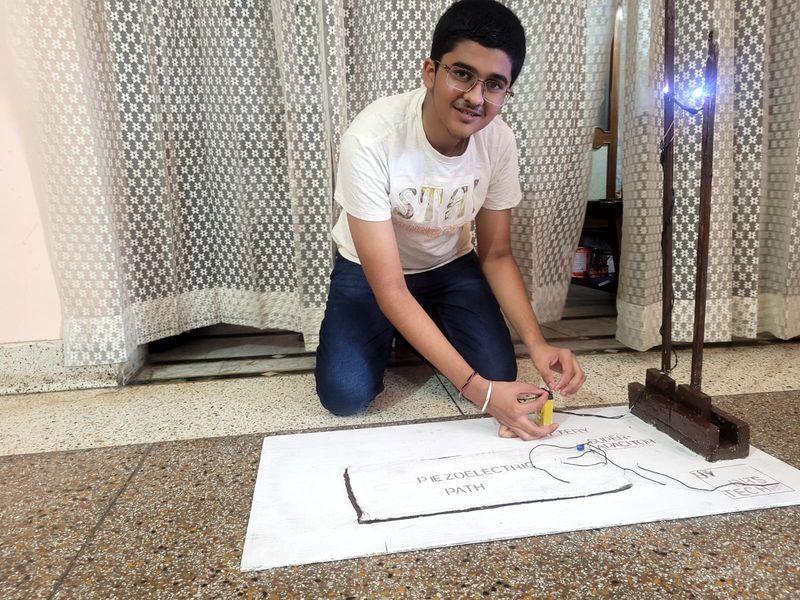
Hoshiarpur Student Builds Device to Generate Power from Footsteps
In a groundbreaking innovation, a Class 8 student from Hoshiarpur, Punjab, has developed a device that can harness energy from the simplest of human activities – walking. Sanchit, the young student, has created a project called “Power beneath our feet,” which uses piezoelectric technology to convert footsteps into electricity.
The innovative device, which has caught the attention of local officials, scientists, and enthusiasts alike, is a testament to the power of creativity and determination. Sanchit’s project aims to revolutionize the way we think about power generation, making it possible to harness energy from a source that is readily available and easily accessible – human movement.
The concept of harnessing energy from human movement is not new. Piezoelectric technology has been used in various applications, such as generating electricity from vibrations, wind, and even ocean waves. However, Sanchit’s project takes this concept to a new level by using it to generate power from the simple act of walking.
The device consists of a series of piezoelectric sensors that are placed on the floor or on a surface that is walked upon. These sensors use a piezoelectric material, such as quartz or ceramic, which generates an electric charge when subjected to mechanical stress, such as pressure or vibration. As a person walks, the sensors detect the pressure and vibrations caused by each step, generating an electric current that can be harnessed and used to power devices.
Sanchit’s project is not just a theoretical concept, but a practical application that has been tested and proven to work. The young student has built a functional prototype of the device, which has been demonstrated to generate a significant amount of electricity from a single person’s footsteps. While the amount of electricity generated may not be enough to power an entire city, it is a significant step towards creating a sustainable and renewable source of energy.
The potential applications of Sanchit’s device are vast and varied. In urban areas, it could be used to power streetlights, traffic signals, and other infrastructure. In rural areas, it could provide a reliable source of electricity for homes and businesses. Even in emergency situations, such as natural disasters, it could be used to provide a temporary power source.
What makes Sanchit’s project even more remarkable is that it is a product of his own initiative and creativity. The young student took it upon himself to research and develop the project, using his own resources and funding to bring it to life. His dedication and perseverance have paid off, as his project has gained attention from local officials, scientists, and enthusiasts.
Sanchit’s project has also sparked interest among scientists and researchers in the field of renewable energy. Dr. Manoj Kumar, a scientist at the Indian Institute of Technology (IIT), has praised Sanchit’s project, saying, “This is a remarkable achievement, especially from a student of Class 8. The potential of piezoelectric technology is vast, and projects like this can help us explore new ways of harnessing renewable energy.”
The success of Sanchit’s project is a testament to the power of innovation and creativity. It shows that even the simplest of ideas can have a significant impact when combined with determination and hard work. As we move forward in a world that is increasingly focused on sustainability and renewable energy, projects like Sanchit’s will play a crucial role in shaping our future.
In conclusion, Sanchit’s device that generates power from footsteps is a remarkable achievement that has the potential to revolutionize the way we think about power generation. It is a testament to the power of innovation and creativity, and a reminder that even the simplest of ideas can have a significant impact when combined with determination and hard work.






